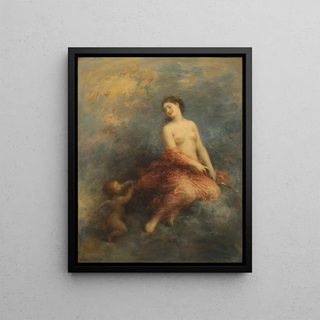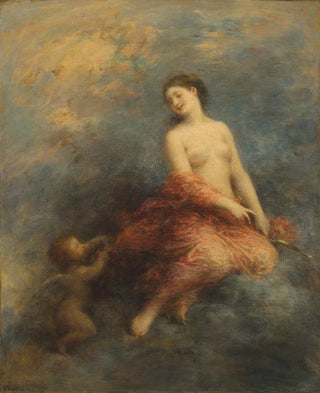Art print | Dawn - Henri Fantin-Latour


View from behind

Frame (optional)
Henri Fantin-Latour’s iconic art print, L'Aurore, embodies a poetic and luminous vision of nature. This painting, evoking the dawn, unfolds like a hymn to beauty and serenity. In this delicate scene, warm color nuances intertwine to create an atmosphere that is both peaceful and vibrant. The artist masterfully captures the very essence of the dawn, this fleeting moment when light begins to flood the world, transforming the landscape and awakening the senses. Through this work, Fantin-Latour invites us to contemplate the magic of early mornings, transporting us to a universe where time seems suspended.
Style and uniqueness of the art print
L'Aurore stands out for its unique style, blending realism and impressionism, characteristic of Fantin-Latour’s work. The meticulous details of flowers, landscapes, and human figures reveal a concern for precision, while the free and vibrant application of color demonstrates an impressionist sensitivity. Pastel shades, delicately nuanced, evoke the morning softness, while light plays a central role in the composition, illuminating each element with almost divine clarity. This art print does not merely depict a scene; it seeks to convey an emotion, an atmosphere, and to invite the viewer to feel the poetry of the moment. The delicacy of the strokes and the harmony of colors create an immersive visual experience, where each glance reveals new subtleties.
The artist and his influence
Henri Fantin-Latour, born in 1836, is a prominent figure of the 19th century, recognized for his still lifes and portraits. His work is deeply rooted in the artistic movement of his time, while bearing a personal imprint that sets him apart. Fantin-Latour was able to draw inspiration from the masters of the past while developing a style that is uniquely his own, contributing to the evolution of modern art. His fascination with light and color, as well as his ability to capture human emotion, influenced many contemporary artists and successors. Through L'Aurore,

Matte finish

View from behind

Frame (optional)
Henri Fantin-Latour’s iconic art print, L'Aurore, embodies a poetic and luminous vision of nature. This painting, evoking the dawn, unfolds like a hymn to beauty and serenity. In this delicate scene, warm color nuances intertwine to create an atmosphere that is both peaceful and vibrant. The artist masterfully captures the very essence of the dawn, this fleeting moment when light begins to flood the world, transforming the landscape and awakening the senses. Through this work, Fantin-Latour invites us to contemplate the magic of early mornings, transporting us to a universe where time seems suspended.
Style and uniqueness of the art print
L'Aurore stands out for its unique style, blending realism and impressionism, characteristic of Fantin-Latour’s work. The meticulous details of flowers, landscapes, and human figures reveal a concern for precision, while the free and vibrant application of color demonstrates an impressionist sensitivity. Pastel shades, delicately nuanced, evoke the morning softness, while light plays a central role in the composition, illuminating each element with almost divine clarity. This art print does not merely depict a scene; it seeks to convey an emotion, an atmosphere, and to invite the viewer to feel the poetry of the moment. The delicacy of the strokes and the harmony of colors create an immersive visual experience, where each glance reveals new subtleties.
The artist and his influence
Henri Fantin-Latour, born in 1836, is a prominent figure of the 19th century, recognized for his still lifes and portraits. His work is deeply rooted in the artistic movement of his time, while bearing a personal imprint that sets him apart. Fantin-Latour was able to draw inspiration from the masters of the past while developing a style that is uniquely his own, contributing to the evolution of modern art. His fascination with light and color, as well as his ability to capture human emotion, influenced many contemporary artists and successors. Through L'Aurore,






